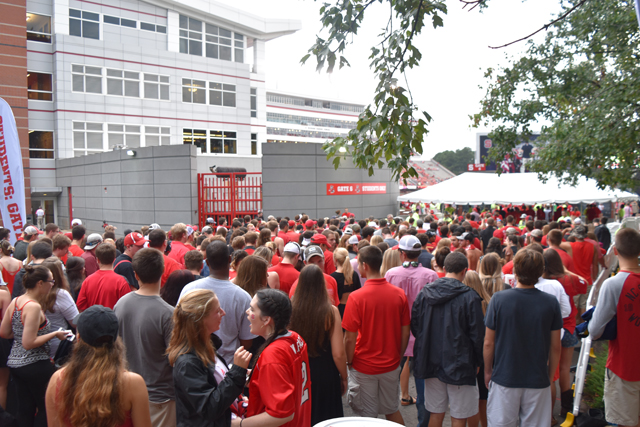The student senate hosted four speakers Wednesday night before voting on a wide range of bills, including one that would increase student fees amid a horrendous budgetary environment.
Provost Warwick Arden and Vice Chancellor Charles Leffler spoke before the senate for nearly 45 minutes describing the finer points of the current budget climate. The director of the financial aid office spoke afterward about the current status of the financial aid department, and finally Kate Almanza from USA Today made a sales pitch for bringing national newspapers and the News & Observer to campus.
The budget
Leffler and Arden are the chancellor’s point men on all things budget related. They have worked since before the summer on a plan–called the strategic realignment plan–meant to tackle the problems presented by a 15.1 percent decrease in state appropriations.
They reviewed where the University stands in regard to the plan Wednesday.
Class sizes have increased, and section availability has diminished substantially. All told, 1,425 sections have been eliminated, and 47,491 class seats have been taken off the table.
The significant decrease in public funding forced administrators to rely more heavily “on tuition/other non-state funds,” according to the Power Point presentation Arden and Leffler displayed.
Nationwide, funding for public universities is at its lowest point in 30 years, Arden said. Schools outside North Carolina have experienced hefty cuts over those 30 years.
However, except for the past three to four years, the state legislature, which has final say over how much funding universities receive, has protected the UNC system from cuts.
“We are catching up very quickly to the rest of the country,” Arden said.
112 people were laid off. Leffler described the number of layoffs as “lower than we were afraid we would have to.”
For the third straight year, staff and faculty have not received a salary increase. Prior to the funding shortfall, employees’ health insurance was paid for entirely by the state. Employees now pay “some of the insurance premiums,” Leffler said.
The strategic plan tapped leaders from across campus to provide recommendations on how to deal with the cuts. Arden and Leffler received “80 to 90” recommendations total. Although Arden said it would be impossible to act on all of them, he intends to lump the most promising ones into a unified implementation plan.
The implementation plan will then be given to the Board of Trustees in November. They will ultimately approve which recommendations to heed.
Financial Aid
Julie Rice Mallette , director of the Office of Scholarships and Financial Aid, presented the senate with the glooming state of financial aid.
“This year has been one of the roughest ever,” Mallette said at the beginning of her presentation.
Although the number of students on campus increased by about 25 percent over the past ten years, undergraduate financial aid applications have almost doubled since 2000. Graduate applications have more than doubled.
Her office has seen a $27.5 million increase in demand for aid over last, but the pools of money from which her office draws have dwindled, or gone dry.
State-funded aid, meant for the entire UNC system, dropped by $35 million this academic year. Of that money, N.C . State lost $5 million, according to Mallette .
During President George W. Bush’s tenure, two federal student aid programs were enacted. Between the two, needy students on campus received about $3 million last year. These two aid programs were eliminated, and students received no money from the programs this year.
2009-10 graduates left school with an average debt of $20,763. With the prospect of receiving financial aid becoming less realistic, students will need to borrow more as they attempt to earn a degree.
Student Fee
USA Today’s national higher education account director Kate Almanza gave a sales pitch to the senate about providing USA Today, New York Times and News & Observer to students through on-campus distribution bins.
Although the first month would be a trial period, and would be free, student fees would increase by roughly $3 if the senate decides to agree to a deal with USA Today.
In Almanza’a presentation, she broke down the cost of the service. Based on numbers from the 450 schools across the nation with a similar program, Almanza estimated one newspaper per every 25 students–called a 4 percent consumption rate–would be sufficient to satisfy demand. At that volume, the total price of the service would be about $102,000.
Students would swipe their campus identification cards to open the bin where the three papers would be located.
The University would only pay for the papers picked up.
The senate met late into the night. As of this article’s publication, they had yet to reach a decision on increasing student fees to pay for the newspaper service.




